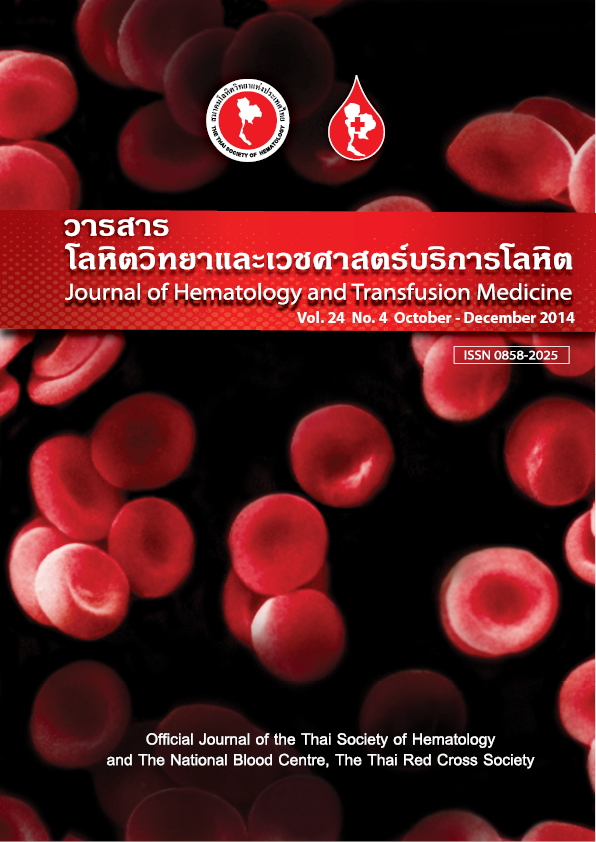Evaluation of Kaolin Clotting Time for the Diagnosis of Lupus Anticoagulants by Using Different Calculation Methods
Keywords:
Kaolin clotting time, Lupus anticoagulantsAbstract
Abstract
Background: Lupus anticoagulants (LA) are a group of antibodies that prolongs phospholipid-dependent coagulation assays. They are associated with a wide variety of clinical settings such as thrombosis and recurrent spontaneous abortion. Objective: To evaluate the results of kaolin clotting time (KCT) obtained from different calculation methods and cut-off values to find the optimal way of identifying of LA. Methods: Plasma samples of 38 LA positive patients and of 50 LA negative patients were analyzed. Results: For the screening test, the calculations that showed 100% in both sensitivity and specificity were KCT, ratios of KCT of test sample to mean KCT of normal pooled plasma (KCT/mNP), or to mean KCT of normal subjects (KCT/mNor). For the confirmatory test, the sensitivity of any calculation methods demonstrated wide discrepancies (23.7-89.5%), while the specificity was high (90-98%). There were variations of the results when using mean+2SD as cut-off but not with the percentiles. The difference between normal saline control and platelet neutralization procedure (NSS-PNP) was the best method for the confirmatory test. Conclusion: The appropriate calculation method of the result should be selected by careful consideration concerning the sensitivity and specificity of the test including cut-off value.



